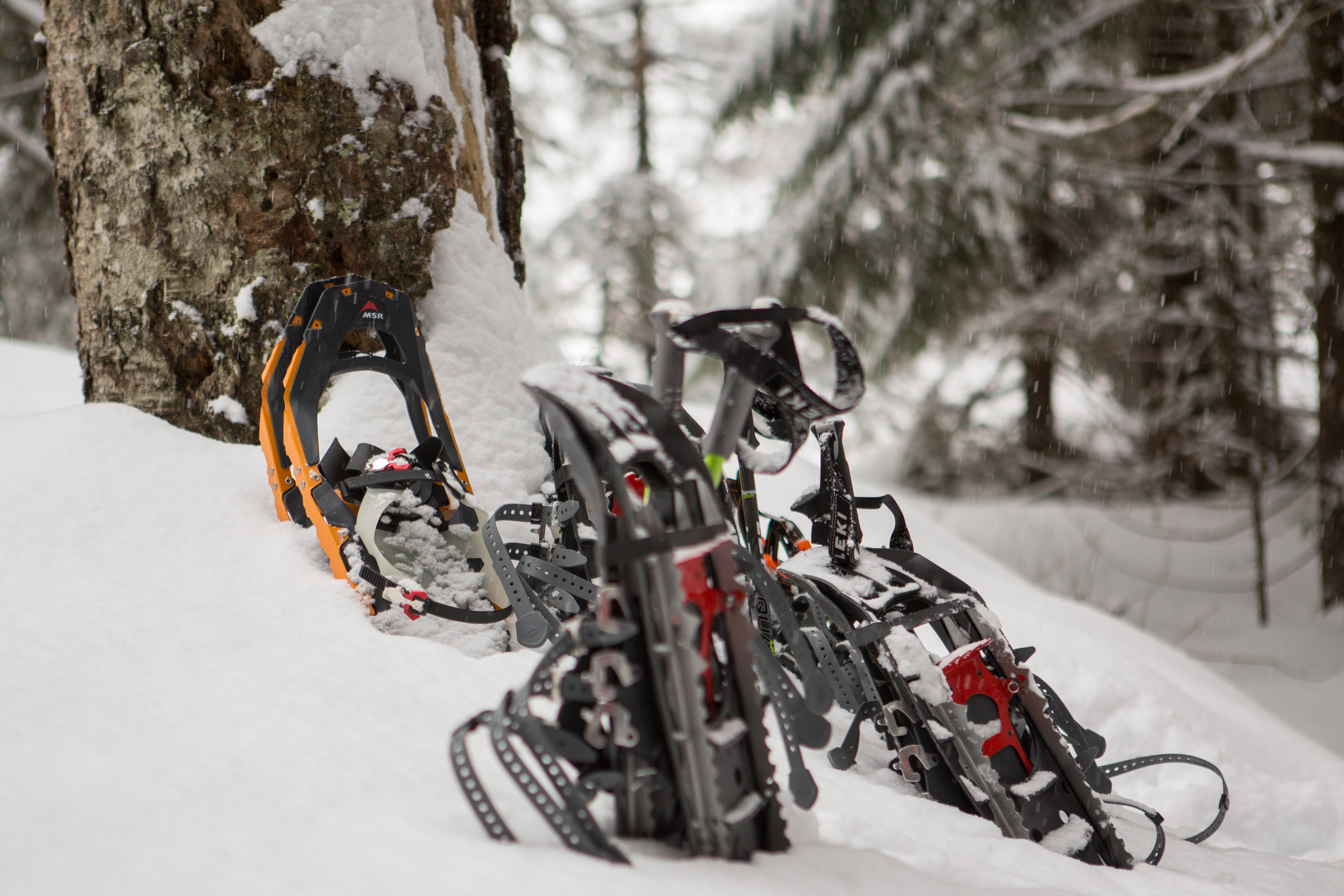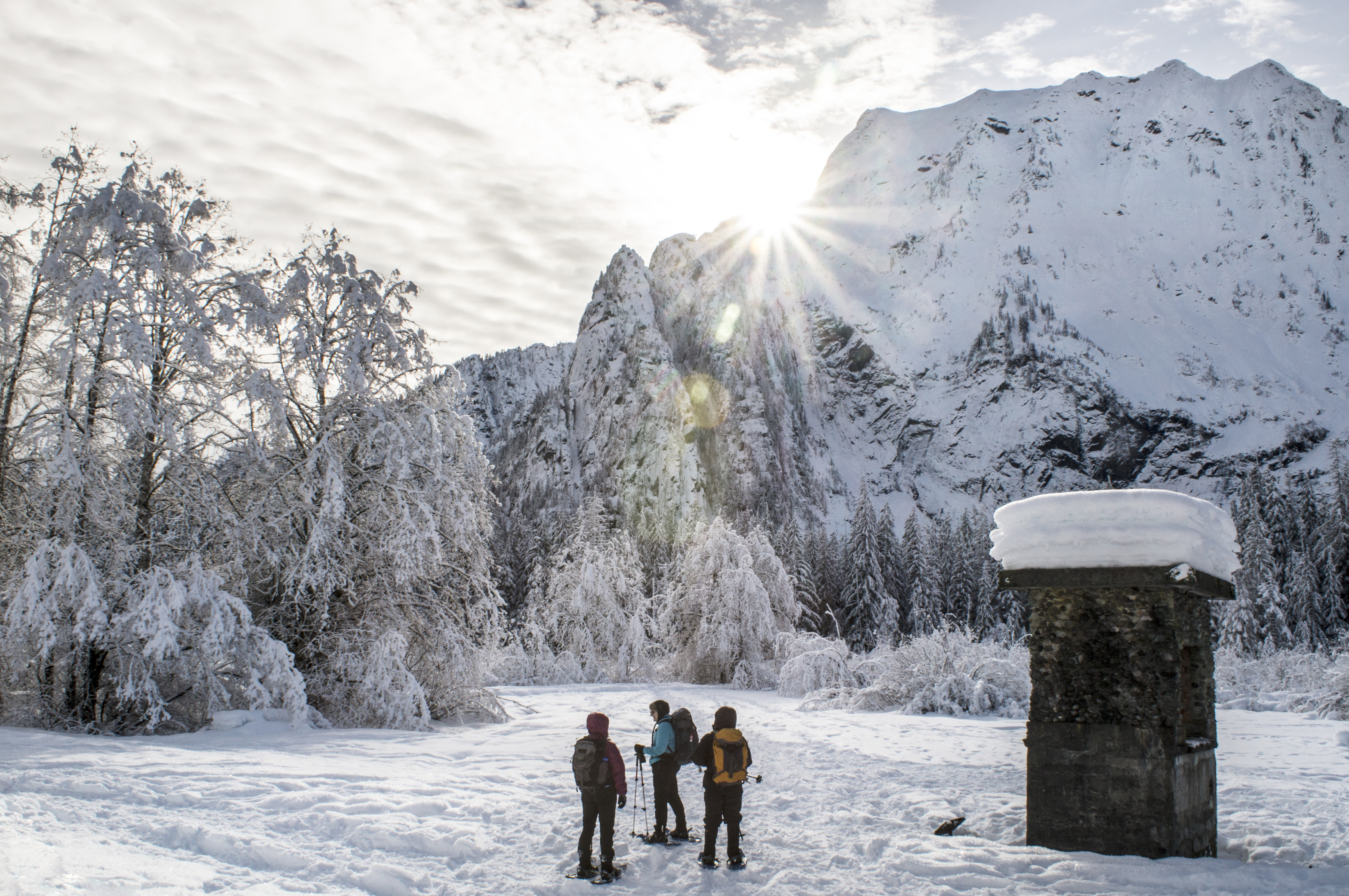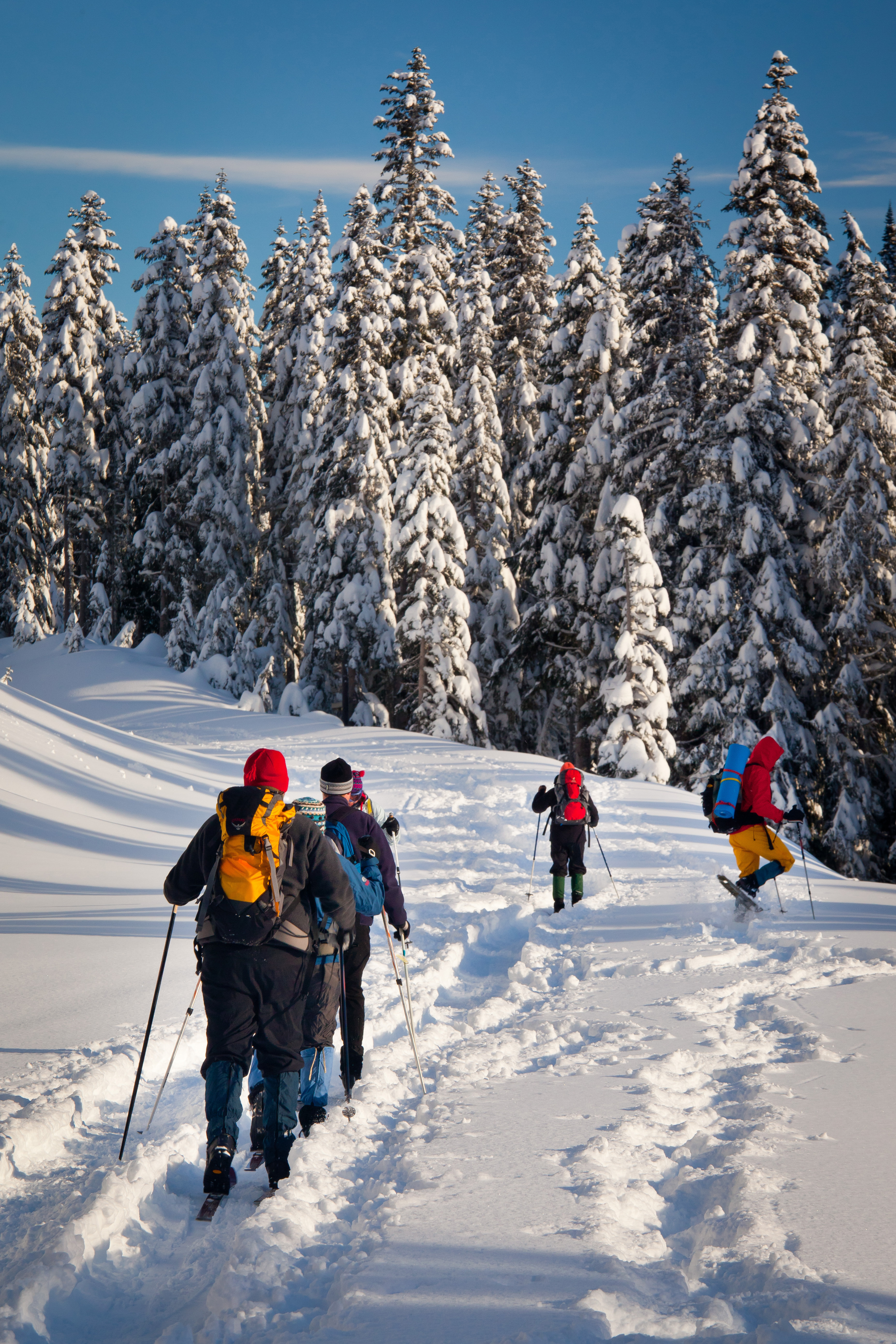 Washington Trails
Association
Washington Trails
Association
Trails for everyone, forever
Snowshoes open up a whole new world in winter — here’s what to consider if you're looking for a pair. By Sandra Saathoff.
Once upon a time, I was a three-season hiker. I yearned for spring melt-off, when I could get back to cruising the trails before another round of winter. Then, a friend let me borrow a pair of snowshoes and introduced me to what I now fondly refer to as “winter hiking.” Snowshoes have turned me into a four-season hiker. If you haven’t tried them yet, maybe they’ll help you get outside more this winter!
The oldest known snowshoes, found in Central Asia, date back 4,000 years. Indigenous people of North America — such as the Algonquin, Coeur d’Alene and Cree — developed the snowshoes we know today, honing designs to suit their environments. While traditional snowshoes were often made from wood and rawhide, today’s adaptations make use of lightweight materials — aluminum, plastic and synthetic fabrics — and ergonomic designs, making snowshoes more accessible and efficient.
Snowshoes come in almost as many varieties as there are hikers.

Four snowshoes sitting in the snow. Photo by Emma Cassidy
The core principle behind snowshoes is to distribute the weight of the user over a larger surface area, which prevents them from sinking (too far) into the snow.
So many options! Once you’ve decided what kind of snowshoer you want to be — for instance, recreational – it’s time to choose your tools. There are many options, with pricing anywhere between $80 and $400. Here are some questions to consider if you’re looking to buy a pair of snowshoes.
If you’re unsure on any of these questions, try borrowing or renting a pair and see what you like and don’t like before making a purchase. Ideally, a successful pairing will make snow hiking fun, not force you to relearn to walk.

Enjoying a snowy day on trail. Photo by Heidi Walker
If you’re a larger person or will be carrying a heavy pack, larger snowshoes will give you more flotation. If you’re smaller or carrying less weight, you can probably go with smaller snowshoes. Snow types also matter — lighter snow will require more flotation, heavier snow will require less. Think about the conditions you’ll most likely use them in. Just make sure you can get a secure fit that keeps the snowshoe in place without being so tight that they make your feet go numb.

Exploring a winter wonderland. Photo by Igne Johnsson.
To start, make sure you have a snug fit and then find a nice, flat spot to practice walking around. A slightly wider stance than normal may be necessary. Try out shorter and longer strides. When traveling uphill, dig the balls of your feet in to engage the traction. On downhills, keep your weight back and use the heel traction for control.
You may also wish to start on well-used trails where the snow is already packed, rather than heading right out into deep snow, which requires more effort.
Snowshoeing can be strenuous. Until you’re used to it, consider taking a pair of traction devices so you can begin a hike on packed snow and swap into snowshoes for the second half of the trek or when you get to softer snow.
Snowshoes will last longer if you take care of them. Remove the snow, ice and debris after use. Store them in a cool, dry place away from sunlight. Check for damage before and after each outing.
Snowshoeing offers a unique way to explore winter landscapes, combining physical exercise with the tranquility of nature. Whether you’re a casual hiker or an adventurous backcountry explorer, the right pair of snowshoes can open up a world of snowy adventure. And you’ll already be in shape for spring hiking season! Winter is right around the corner — will I see you out there?